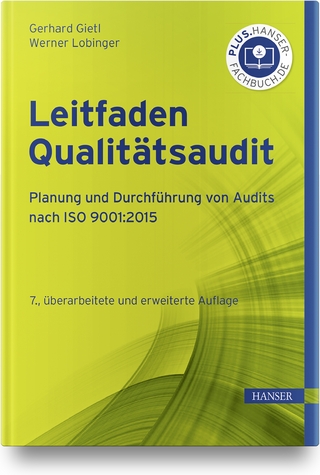
Right By Design
Productivity Press (Verlag)
978-1-032-26006-8 (ISBN)
Product design is becoming increasingly challenging as product complexity increases dramatically with the advent of autonomous control and the need to achieve zero emissions. Companies continue to have poor product launches with significant numbers of recall campaigns and high after-sales warranties. It is important that potential product failures are identified and fixed during the design of a product. Failure modes found after the design has matured are normally easy to find, with some being identified by the customer, but are often difficult and expensive to fix; modifying one part will often have a knock-on effect on other parts, causing other problems. Discovering failure modes early in the design process is often difficult – requiring rigorous and comprehensive analysis – but once found, such failure modes are usually easy and cheap to fix.
This book presents an approach to product design based on Failure Mode Avoidance that utilises a series of strongly interrelated engineering tools and interpersonal skills that can be used to discover failure modes early in the design process. The tools can be used across engineering disciplines.
Despite engineering being largely a team activity, it is often the case that little attention is paid to the team process after the team membership has been identified, with membership normally being based on technical expertise. In addition to technical expertise, an effective engineering team requires individual engineers to work together efficiently. Good leadership is also required, with the leader able to both manage change and encourage individual team members to work to the best of their ability. This book interweaves technical skills, team skills and team leadership in a way that reflects their real-life interrelationship.
The book tells the fictional story of a small engineering team and its leader as they implement the skills introduced in the book and follows their experiences reflecting individual difficulties, enthusiasm, humour and scepticism in applying the methodologies and tools for the first time. In addition, the story tells of team members’ interactions with their management and peers within a company that, having been very successful, finds itself in financial difficulties. It promotes constructivist learning through the reader empathising with the characters in the book. These characters ask questions that are typical of those that learners will ask about the subject matter. Learning reinforcement is also integrated into the storyline as a natural and unobtrusive feature.
Ed Henshall is a former UK Royal Academy of Engineering Visiting Professor in Integrated System Design at the University of Bradford, UK. For the first decade of his career Ed lectured in Physics within Further Education in the UK before moving into the automotive industry. He worked for the next two decades within both Manufacturing and Product Design in a multinational automotive company being based in both Europe and the United States. During his time as a RAEng Visiting Professor Ed delivered numerous training courses in Failure Mode Avoidance within Industry in the UK, US, and Europe. Ed holds a Ph.D. in Physics and is a qualified adult teacher.
1. Beginning Anew, 2. Meeting the Team, 3. Framing Actions, 4. Tracking States, 5. Applying Guidelines, 6. Crossing Boundaries, 7. Analysing Failure, 8. Branching Out, 9. Investigating Noise, 10. Developing Models, 11. Preventing Failure, 12. Moving Levels, 13. Verifying the Design, 14. Reviewing Achievements
| Erscheinungsdatum | 20.02.2023 |
|---|---|
| Zusatzinfo | 168 Line drawings, black and white; 168 Illustrations, black and white |
| Verlagsort | London |
| Sprache | englisch |
| Maße | 178 x 254 mm |
| Gewicht | 720 g |
| Themenwelt | Technik ► Umwelttechnik / Biotechnologie |
| Wirtschaft ► Betriebswirtschaft / Management ► Logistik / Produktion | |
| Wirtschaft ► Volkswirtschaftslehre | |
| ISBN-10 | 1-032-26006-8 / 1032260068 |
| ISBN-13 | 978-1-032-26006-8 / 9781032260068 |
| Zustand | Neuware |
| Informationen gemäß Produktsicherheitsverordnung (GPSR) | |
| Haben Sie eine Frage zum Produkt? |
aus dem Bereich


